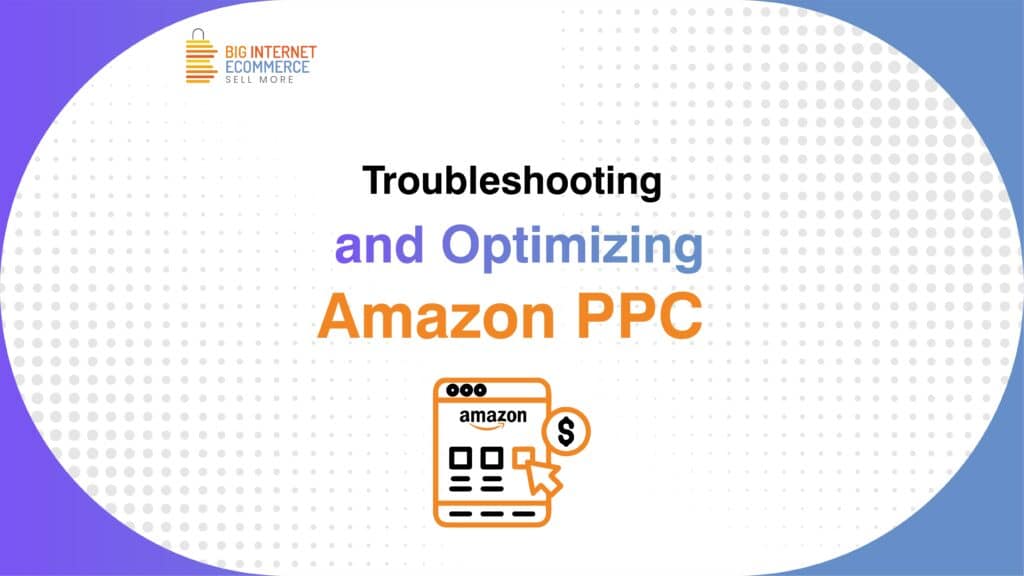Troubleshooting and Optimizing Amazon PPC
Succeeding in Amazon PPC and putting together all the profitable keywords is more of an art than a science. 70% of all online sales take place only from the first page of search results. A good sponsored products campaign should help your products gain a better organic rank as well. Let us take a detailed look at how to optimize Amazon’s PPC and make it more profitable. How Does Amazon PPC Work? Amazon PPC is its own advertising system that they provide for the sellers. Sellers set a daily budget and bid on keywords and keyword phrases for which they would want their advertisements to appear. PPC is more like an auction – the higher the bid, the better your ad placement will be. Remember, you only pay when someone clicks on your ad. However, clicking on the ad doesn’t guarantee any sales. There is no shortcut to success when it comes to PPC. You can’t just expect to set up a campaign and see it work. It is a cyclic process – you input data, gather reports, analyze, make an educated change, and let it rerun. This process of testing, refining, and retesting is continuous and takes multiple iterations before you finally arrive at the ‘sweet spot’. Here are some best practices which you need to understand before setting up your campaign: Setting up a Daily Budget – Higher your daily budget, the more frequently your ad will be visible. The algorithm knows that it will only need to display your ad as many times as needed to fulfil your daily budget. Pro Tip: Use the daily budget to your advantage to get the ads shown more frequently. Picking Relevant Keywords – The algorithm ranks the products whenever a search is made and the product is sold. i.e., for every conversion. In simple words, PPC helps you improve your product’s organic rank for certain keywords whenever it converts. So our ultimate goal is to not have a big list of keywords in the campaign but to have a handful of relevant keywords which could potentially convert and improve your organic rank. Pro Tip: Do not keep your major keyword in the campaign as it is generally the most expensive one. If you spend more than what you make, it is not really worth it. Try Both Automatic And Manual Campaigns – Both automatic and manual campaigns have their own distinct pros and cons. While an Automatic campaign helps you collect data through which buyers search your product and discover targeting opportunities, manual campaigns give you control and let you decide on how far you want to go with certain keywords. Testing the Match Types – Broad, phrase, and exact are the three different match types with which you can put together keywords in different forms. It is important to put the keyword match types in a separate ad group to test which match type is converting better. Understanding ACoS, CTR, and CPC – They are the KPIs of Amazon PPC campaigns. ACoS (Advertising cost of sale) is usually the one that is referred to as a key indicator. There are other metrics which you need to focus on. If the CTR (Click through rate) is lower than 1%, you need to revamp the keyword list and add more keywords that are relevant since the customers are not finding your product relevant for their searches. If the CPC (Cost per click) is high, you need to adjust the bids and optimize to achieve a lower ACoS. Add Negative Keywords – Do not underestimate the Negative Keywords tab in your campaign setup. This is often ignored and paid the least attention to. If used properly, Negative keywords will help you cut down the cost of the campaign. Ideally, after the initial test run, analyze the keywords and move the ones that are costing you clicks and no sales to the Negative Keywords list, so your ads won’t appear for those and you need not spend on them anymore. Your Campaign is Still Not Profitable? If you have followed these golden rules and your campaign is still not profitable, then there can only be three kinds of problems. Let’s handle them one at a time. No Impressions No Clicks No Conversion No Impressions “No, or very few impressions” just means your ad is not getting seen by people. For some reason, the algorithm is not displaying your ad to the buyers for the search terms which you have set in your campaign. It could be because your product is not optimized for the keywords that you are running the ads for. If your ASIN is indexed for the desired keyword by searching, ASIN+ Keyword – if you get your product in the search results, it means your ASIN is perfectly optimized. If not, go back to the product listing and optimize your content with the relevant search terms. There may not be enough search volume which could be the case with small niches or the daily ad budget is set too low. Increase the budget and test the campaign again. No Clicks When you get lots of impressions but little to no clicks, it means your product listing is not very impressive at first look. Poor title or image Poor price point No Reviews These are the psychological barriers which are stopping them from clicking on your ads. Fix these and rerun the ads. No Conversions People see your ads and click on them but don’t buy them – this is frustrating. Again, the reason could be poor listing quality and reviews. You may have to work on all the images and provide adequate bullet points and descriptions with interesting features and values. Do not add any misleading information, especially in the title. Stay true to the product and sell it as it is. How to find the Right Keywords For Your Campaign? We have talked a lot about keywords and their importance. Finding the right bunch of keywords to
Troubleshooting and Optimizing Amazon PPC Read More »



